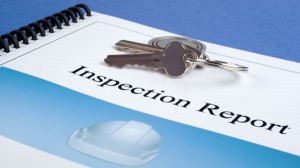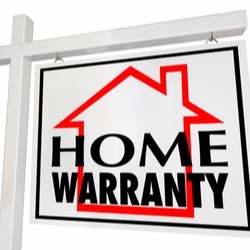The TOP 5 Things You Can Do To Sell Your Tucson Home For the Most Amount Of Money In The Least Amount Of Time!
Watch The Short Video Below
Tip #1: Inspect Before You Get Inspected
 The number one thing you can do is inspect before you get inspected, in order to sell your home for the most amount of money in the least amount of time, with the least amount of distractions to your daily life. And so what does this mean? A lot of sellers skip this step. It takes a little bit of time, there’s a little bit of money that goes into it, but at the end of the day, it’ll eliminate a whole lot of stress, disruptions to your daily life. And it’ll end up netting you more money, in my opinion. And that is getting your home inspected upfront before you decide to sell it. That way, there are no surprises if you’re the seller. And surprises are only good on your birthday.
The number one thing you can do is inspect before you get inspected, in order to sell your home for the most amount of money in the least amount of time, with the least amount of distractions to your daily life. And so what does this mean? A lot of sellers skip this step. It takes a little bit of time, there’s a little bit of money that goes into it, but at the end of the day, it’ll eliminate a whole lot of stress, disruptions to your daily life. And it’ll end up netting you more money, in my opinion. And that is getting your home inspected upfront before you decide to sell it. That way, there are no surprises if you’re the seller. And surprises are only good on your birthday.
But over the last 30 years, I can’t tell you how many times a seller lists their home, they think their home’s perfect. They’ve been in it forever, and they’ve taken good care of it, but the buyer puts it under contract. And then they’ve got within the contract, they have a period of time to do all the home inspections, and there’s always a surprise that the seller is not aware of, and a typical budget-buster that ends up being rather expensive. And they end up netting a whole lot less than what they thought they were going to net as a result of something coming up on the inspection. So I recommend, and it’s a great idea, you know, I talk about the most amount of money, least amount of time, fewest disruptions, and this is going to create the least amount of disruptions to you as the seller.
And that is going and getting all the inspections done upfront and being totally transparent. It’s not that the buyer’s not going to do their own inspections, but the more stuff you can do, the more transparent you’re going to be, it’s just going to put the buyer at ease. And at the end of the day, you’re going to net a whole lot more money, and you’re not going to be surprised. So you can hire a main home inspector to come out and inspect. There’s going to be a handful of little things, there always is, but you’re looking for the main budget busters, surprises that you can understand what may be potential issues when selling, and go ahead and getting those things fixed so you can net more money.
The other thing you can do is have a termite company come out, do a termite inspection, which is really inexpensive. In Arizona, Tucson, it’s not a matter of if, it’s a matter of when in terms of homes getting termites. It just happens. But it’s really easy to treat and then put a warranty under your home in terms of a termite warranty to show your potential buyer that, hey, here’s our termite warranty. Here’s what we’ve done. And the home’s under warranty, which is going to put the buyer at ease.
This is a really good idea, having a roof inspector come out and inspect your roof prior to listing it. And this is, in my opinion, the number one surprise that sellers get, and that is buyer puts a home under contract, during the inspection, there are issues with the roof. And so if you can have a roofer come out and inspect, and if there are any things that need to be done, you can have those things done and then provide anywhere from a two to five-year roof warranty upfront that the buyer knows about.
The other thing you can do is have a plumber come out and scope the pipes. This is another thing that comes up all the time that can create surprises. So if you can do these things up front and then be totally transparent to the buyer and also the buyer’s agent, it just puts the buyer at ease and it makes the inspection period, which is the most challenging period within the purchase contract, getting through what we call the BINSR, or the buyer inspection notice seller response. But if you do these things up front, in my opinion, you’re going to net more money and you’re going to reduce the amount of disruption, surprises when it comes to selling a home.
Because a lot of times, you get a home under contract, you’re excited, and then the inspection period comes and then you get the laundry list of items, and homes could typically fall out of escrow, or you’ve got to do a bunch of repairs. And now you’re scrambling to get all those things done before closing.
So I recommend doing it in reverse and getting those things done upfront. It can cost you a little bit of money, but in my opinion, it’s going to net you more money and reduce the number of hassles and disruptions in your daily life by doing the inspections upfront. So that was the number one thing that I recommend in order to get more money, sell it in the quickest amount of time, with the least amount of disruptions.
Tip #2: Clean and Declutter Your Tucson Home
 The second thing you can do to sell your home for the most amount of money in the least amount of time, with the least amount of disruptions, is cleaning and decluttering your home before listing. And this is going to do a handful of things. The perception of the buyer, when they’re looking at your home online or in person, they’re looking at the little things, and if there are little things that they can visually see, they’re wondering in their head if these things that I can visually see are wrong, I wonder what’s going on that I can’t see.
The second thing you can do to sell your home for the most amount of money in the least amount of time, with the least amount of disruptions, is cleaning and decluttering your home before listing. And this is going to do a handful of things. The perception of the buyer, when they’re looking at your home online or in person, they’re looking at the little things, and if there are little things that they can visually see, they’re wondering in their head if these things that I can visually see are wrong, I wonder what’s going on that I can’t see.
So by cleaning and decluttering your home, first impressions are key, this can help you bring in more buyers, and with more buyers and more lookers, it’s going to be driving the price up to allow you to sell your home for the most amount of money in the least amount of time. So cleaning and decluttering is really important.
Tip #3: Get Professional Photos Taken Before You List Your Home
 The third thing you can do when selling your home to get the most amount of money, least amount of time, least amount of disruptions, this one’s key. Don’t miss this step! And that is make sure you get professional photos done before listing your home. This is the number one mistake sellers make. You want to make sure you’ve got well done professional photos, because typically your first showing’s online, a hundred percent of your first showing is online. So you’ve got to have a really good internet presence when it comes to your listing and the photos that are taken.
The third thing you can do when selling your home to get the most amount of money, least amount of time, least amount of disruptions, this one’s key. Don’t miss this step! And that is make sure you get professional photos done before listing your home. This is the number one mistake sellers make. You want to make sure you’ve got well done professional photos, because typically your first showing’s online, a hundred percent of your first showing is online. So you’ve got to have a really good internet presence when it comes to your listing and the photos that are taken.
So when you’re talking to agents, ask them the question, “Tell me about the photos that you’re going to use.” And if they’re going to take them themselves, you want to run the other way and make sure you’re using an agent that is going to get professional photos done. If you use us to sell your home, we’re actually going to get them ordered and pay for them for you.
So again, can’t emphasize it enough, make sure you’ve got professional photos done prior to listing. And a lot of agents, too, I shouldn’t say a lot, but there’s a handful of agents that will actually list homes in the MLS with one photo or no photos, and that’s a huge no-no. So make sure you’ve got professional photos done before your listing goes live in the MLS.
Tip #4: Price Your Home Correctly
 The fourth thing you can do to sell your home for the most amount of money in the least amount of time, least amount of disruptions, is pricing your home correctly. And this is so important. And it’s one of the number one mistakes that I see home sellers make, is out of the gate, and I get it, they want to net and sell their home for the most amount of money. But starting out too high can actually backfire on you as a seller because what happens is if a home’s priced too high, it ends up sitting on the market. And there’s what is called days on market. And in the MLS, in the listing, the general public can see how long a home has been listed on the market. And the longer a home sits, the perception to buyer’s agents and buyers, people begin to ask, why hasn’t this home sold? What’s wrong with it?
The fourth thing you can do to sell your home for the most amount of money in the least amount of time, least amount of disruptions, is pricing your home correctly. And this is so important. And it’s one of the number one mistakes that I see home sellers make, is out of the gate, and I get it, they want to net and sell their home for the most amount of money. But starting out too high can actually backfire on you as a seller because what happens is if a home’s priced too high, it ends up sitting on the market. And there’s what is called days on market. And in the MLS, in the listing, the general public can see how long a home has been listed on the market. And the longer a home sits, the perception to buyer’s agents and buyers, people begin to ask, why hasn’t this home sold? What’s wrong with it?
So it’s key to price your home correctly, and what that’s going to do, it’s going to drive more demand to your home, more showings, more activity, which could potentially drive the price up because you could end up getting multiple offers. So can’t emphasize it enough, pricing your home correctly is so important. And when pricing your home, there are a few strategies that you can do and think about when doing it, one of which is called price bracketing. So in the MLS, typically people and agents, when they set up searches, they’re setting them up by price brackets, typically in increments of 25,000.
So for example, let’s say you had your home priced at 272. It would be better, actually, to price it at 275, because what happens is people set up price brackets from let’s say 200 to 275, or from 275 to maybe 325. So typically price brackets are done in increments of 25 or 10,000. So it’s better to be within a price bracket you can hit, whether you’re on the top side of one price bracket or the bottom side of another price bracket. Think about what we call price bracketing, and talk to your agent. They can better explain it. We’re going to run comps, look at the comps, and then based on the comps, give you our opinion in terms of what we think you should list it for, based on the comps. And then we could also consider when you and the agent finally decide on that list price, pay attention to price bracketing, because it could come into play to end up getting you more traffic based on how people are searching.
The second strategy you can do, and I like this one, depending on the type of situation, but that is what we call range pricing. And the reason I like this is because the bottom end of the range is what is shown in the MLS in terms of the average dollar per square foot. So it can make a home look really, really attractive. So for example, let’s say you have a home and it needs a little bit of work, maybe some fix-up. With a cash offer, quick close, you’d be willing to take the bottom end of the range. So let’s say you range price your home from let’s say 275 to 300, depending on whether it’s a cash deal and a quick close, or whether you’re going to get seller concessions, you’d take the higher end of the range. So it gives you a little bit of flexibility based on what the offer is and based on what the buyer’s wanting if you range prices.
So I like this strategy. You’ve got to have a nice tight, realistic range, and you’ve also got to be willing as the seller to take the bottom end of the range. Some agents or buyers do this deceptively, where they range price it, but they’re never going to take the bottom end of the range that’s in the MLS. So that’s the wrong way to do it. But the right way to do it is do have a range. And again, it’ll open up more buyers coming to the table, just because that lower price that you would take if it was the right offer, that is what the average dollar per square foot is calculated on. So it can end up driving more traffic and selling your home for the most amount of money in the least amount of time.
So again, sit down and consult with your agent in terms of pricing, look at those comps, and just be open to pricing it right to ultimately get more money, rather than starting out too high, having it sit on the market, to end up having to do a price reduction and getting less for your home. So just something to think about.
Tip #5: Provide A Home Warranty To The Buyer
 The fifth thing you can do to sell your home for the most amount of money, least amount of time, least amount of disruptions, is provide a home warranty to the buyer and get your HVAC system certified. So providing a home warranty to the buyer, just gives the buyer peace of mind that if anything goes wrong, they’re covered. It’s just a good thing to do. And then the other thing that that does is it actually reduces your liability as to the seller. So if something does go wrong, the home warranty covers it and it reduces your liability big time. So it’s well worth the cost. They’re going to range anywhere from probably 500 to a thousand dollars, depending on the size of the home and whether there’s a pool.
The fifth thing you can do to sell your home for the most amount of money, least amount of time, least amount of disruptions, is provide a home warranty to the buyer and get your HVAC system certified. So providing a home warranty to the buyer, just gives the buyer peace of mind that if anything goes wrong, they’re covered. It’s just a good thing to do. And then the other thing that that does is it actually reduces your liability as to the seller. So if something does go wrong, the home warranty covers it and it reduces your liability big time. So it’s well worth the cost. They’re going to range anywhere from probably 500 to a thousand dollars, depending on the size of the home and whether there’s a pool.
And then the other thing you can do is get your HVAC system certified prior to listing your home or prior to the home inspection, and what that does, if it’s certified, if something goes wrong after the fact, the home warranty will cover it. If the home warranty can prove that there was a preexisting condition, the system might not be covered. So again, just gives the buyer peace of mind.
And if you do that upfront, when they go do the inspections and you’ve got all that paperwork done, that it’s been certified, it just, you know, the third thing that I’ve been saying, least amount of disruptions to your daily life, again, it eliminates all surprises, and you won’t be surprised and have a big disruption in your daily life because now you’ve got to do a bunch of repairs to your HVAC system. So I’d recommend getting it certified upfront and also providing the home warranty and getting sellers’ coverage, just peace of mind and reducing disruptions to your daily life, so the process goes super smooth.




